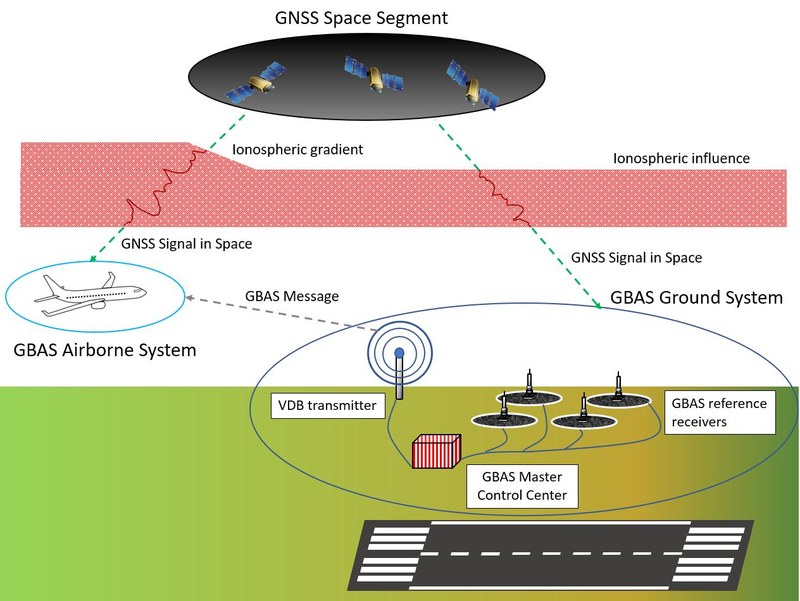María Caamaño Albuerne defends her thesis on augmentation systems for civil aviation
Jul 13, 2022
María Caamaño defended her thesis co-directed by José Miguel Juan Zornoza and Jaume Sanz Subirana on July 12 at the North Campus of Barcelona. Titled "Network-Based Ionospheric Gradient Monitoring to Support Ground Based Augmentation Systems", the thesis presents a new concept for monitoring ionospheric gradients in systems installed at airports to ensure the safety of civil aviation operations.
The Ground Based Augmentation System (GBAS) is a local-area, airport-based augmentation of Global Navigation Satellite Systems (GNSSs) that provides precision approach guidance for aircraft. It enhances GNSS performance in terms of integrity, continuity, accuracy, and availability by providing differential corrections and integrity information to aircraft users. Differential corrections enable the aircraft to correct spatially correlated errors, improving its position estimation. Integrity parameters enable it to bound the residual position errors, ensuring safety of the operation. Additionally, a GBAS ground station continuously monitors and excludes the satellites affected by any system failure to guarantee the system integrity and safety.
Among the error sources of GNSS positioning, the ionosphere is the largest and most unpredictable. Under abnormal ionospheric conditions, large ionospheric gradients may produce a significant difference between the ionospheric delay observed by the GBAS reference station and the aircraft on approach.
We propose the Network GBAS concept, in which several reference stations collaborate to monitor for actual ionospheric gradients. This concept consists of two main steps. First, the network detects the anomalous ionospheric gradients, estimates the gradient parameters, and transmits this information to the GBAS stations installed in its coverage area. Then, the GBAS stations replace the “worst-case” gradient used to mitigate the ionospheric threat in current algorithms with the gradient information provided by the network. This approach reduces conservatism and leads to an improvement of the system availability without compromising user integrity.
Results demonstrate that the Network-GBAS concept can significantly enhance CAT I GBAS availability in active ionospheric regions without compromising user integrity. Furthermore, by incorporating the information provided by the network into existing solutions, the Network-GBAS is compatible with existing algorithms and hardware, and thus should be certifiable if adapted to the characteristics of each region where GBAS is fielded.

Share: